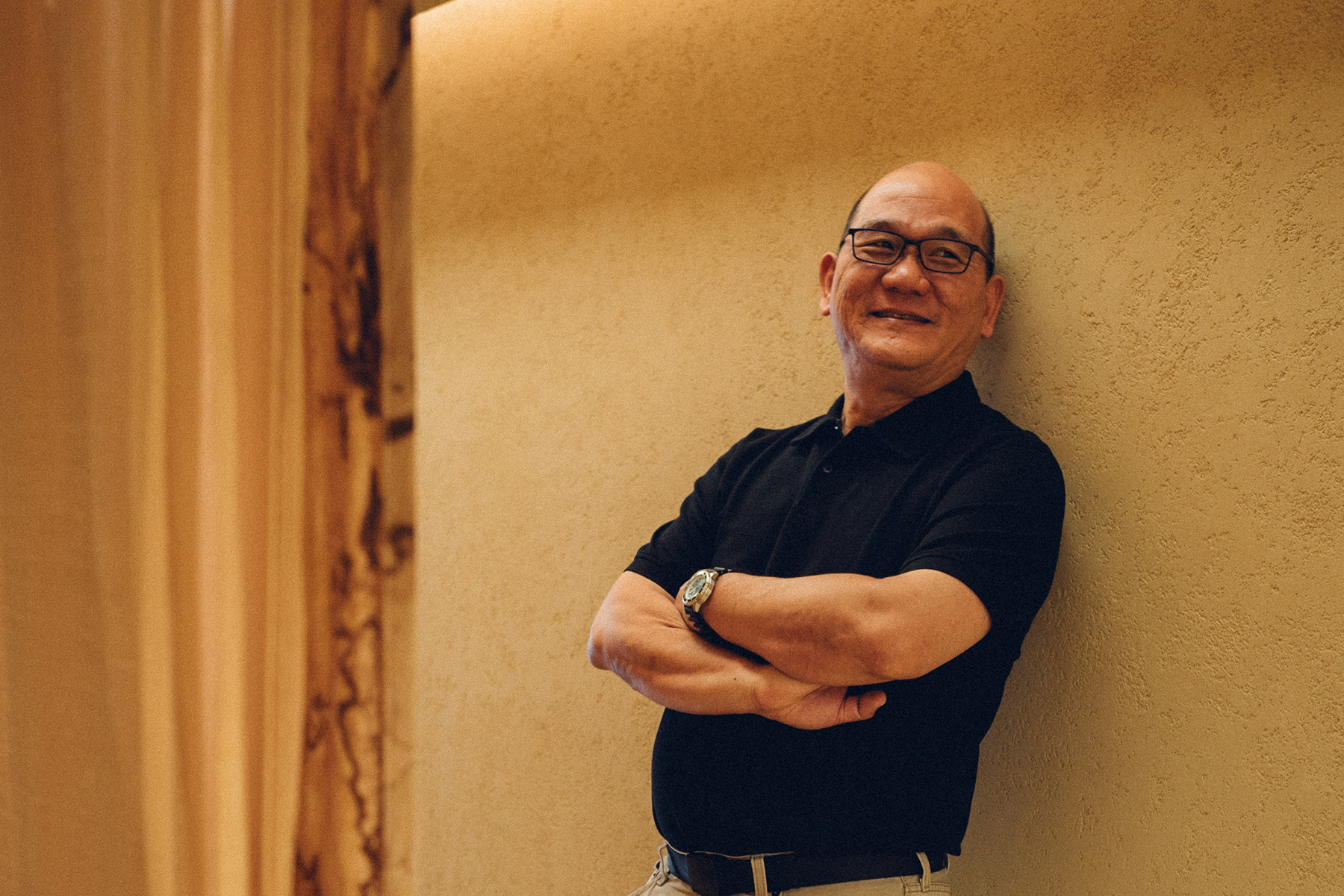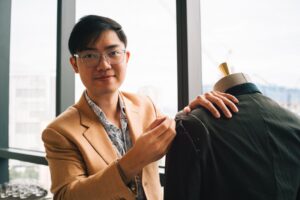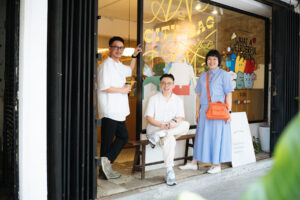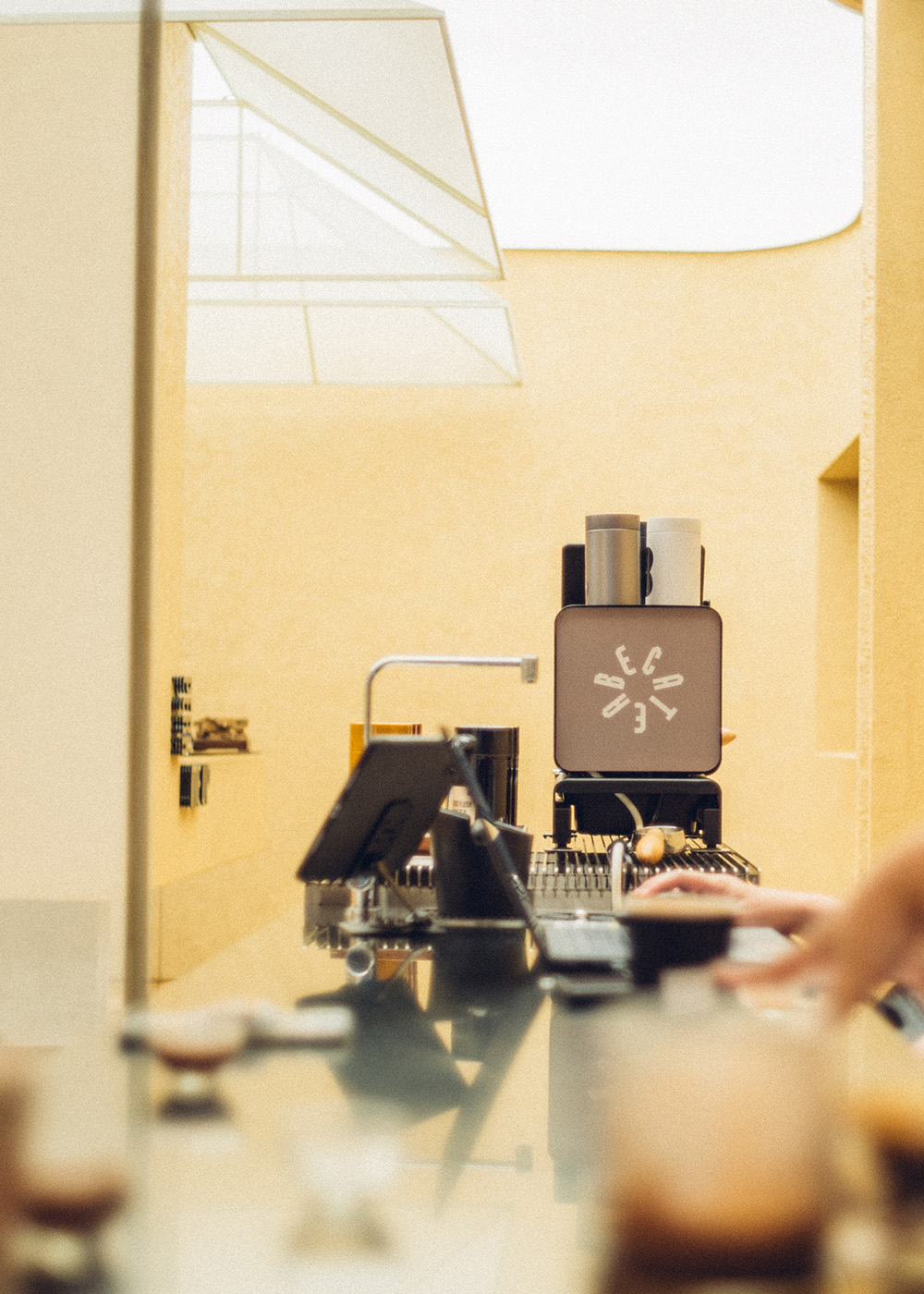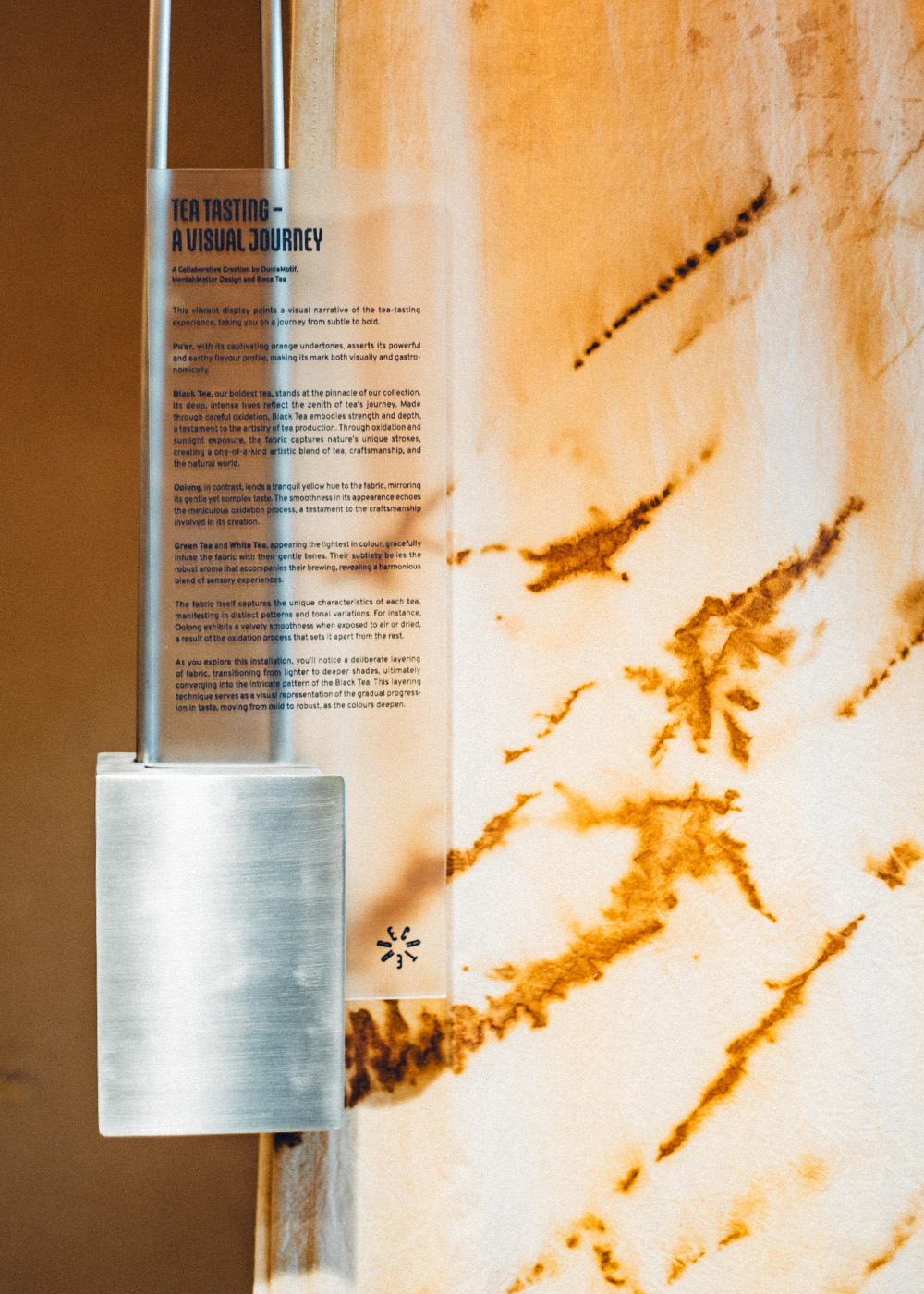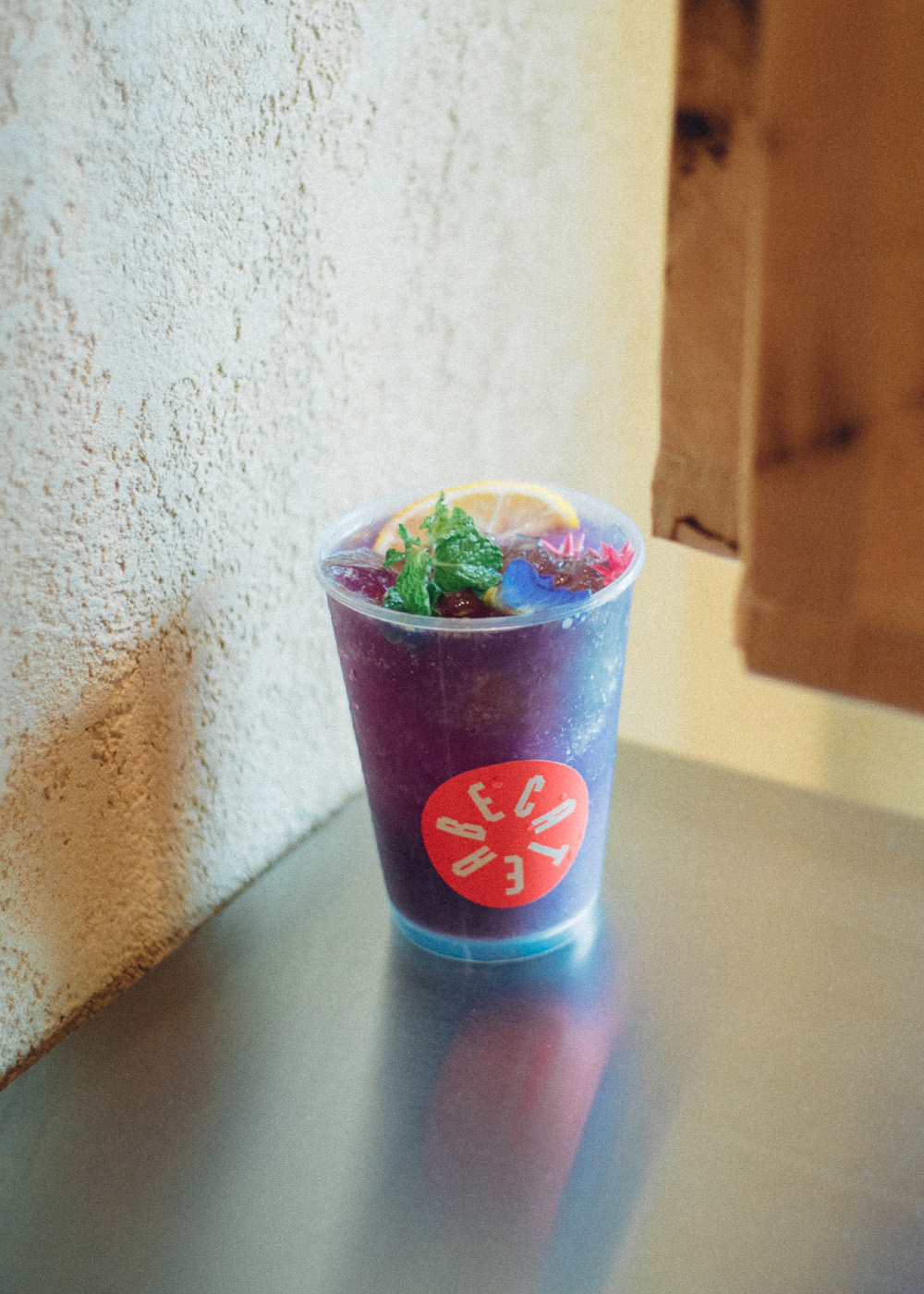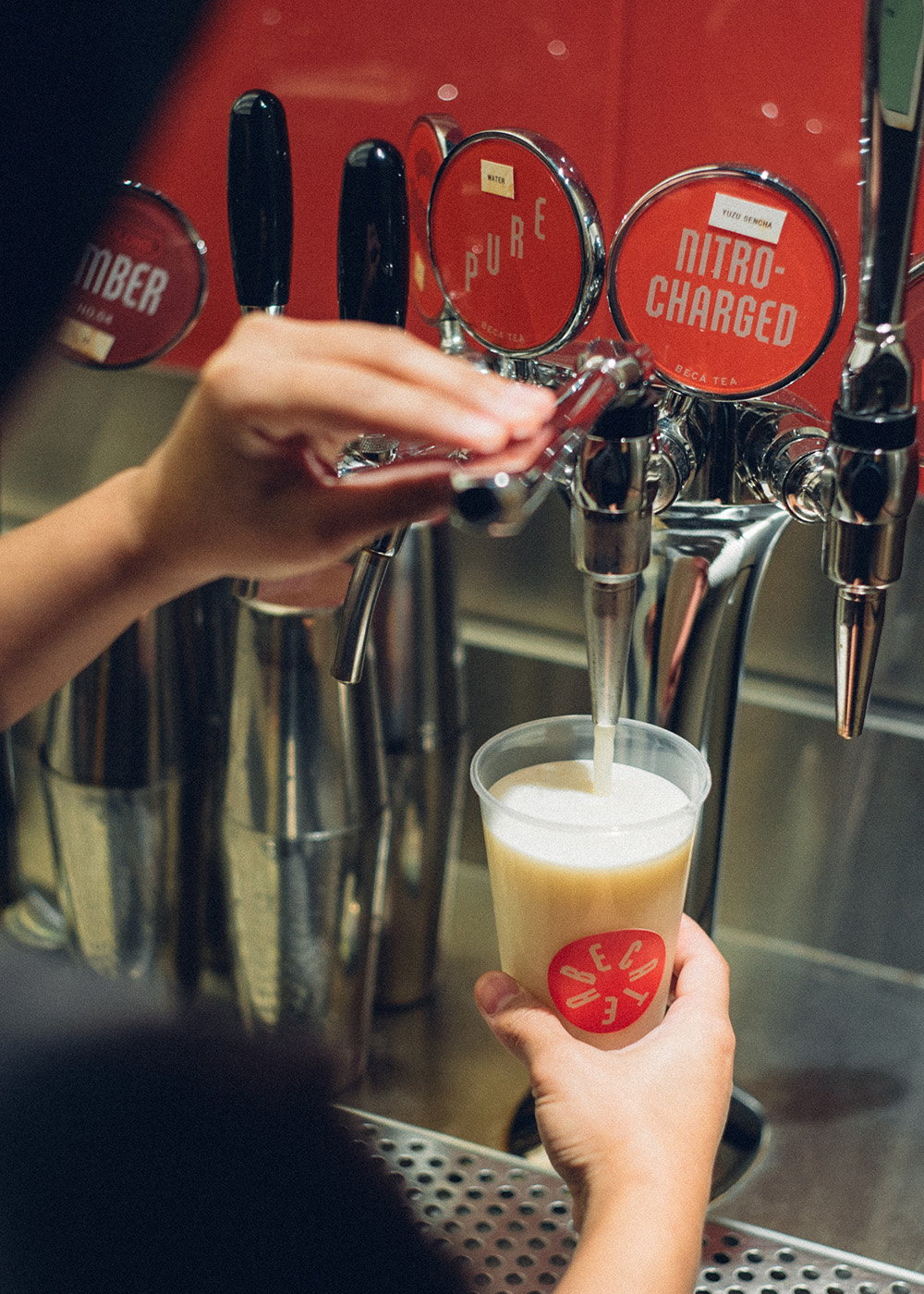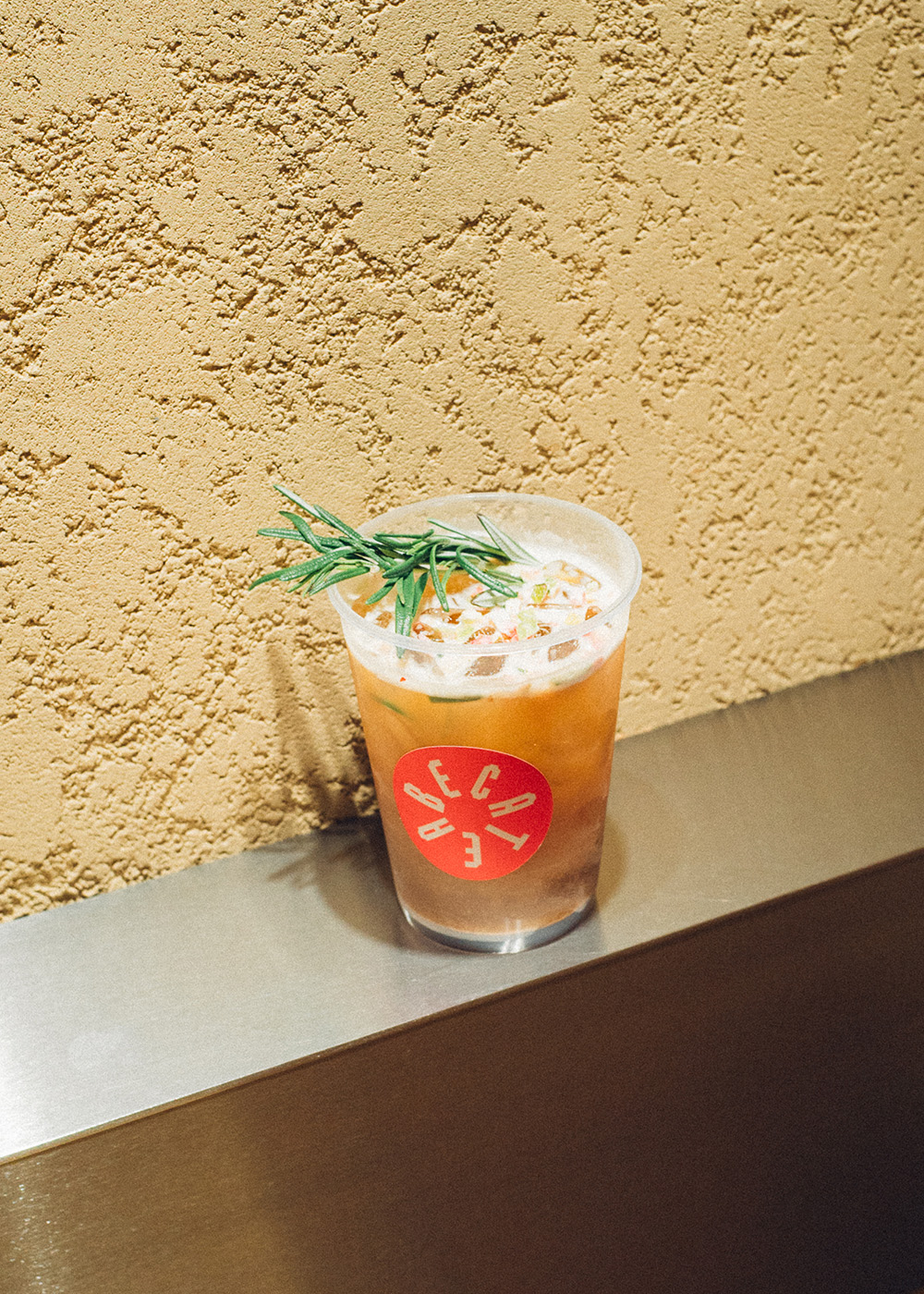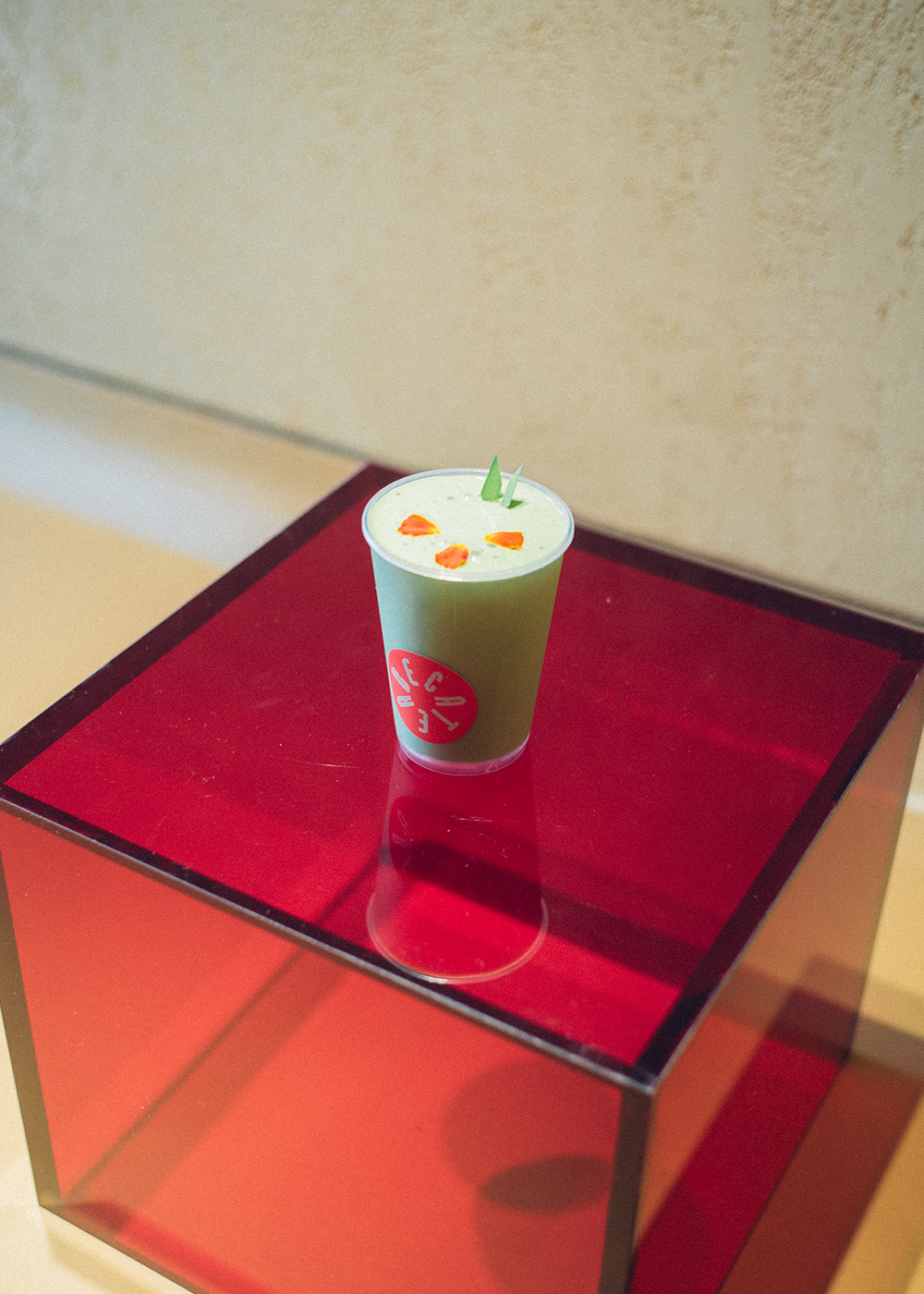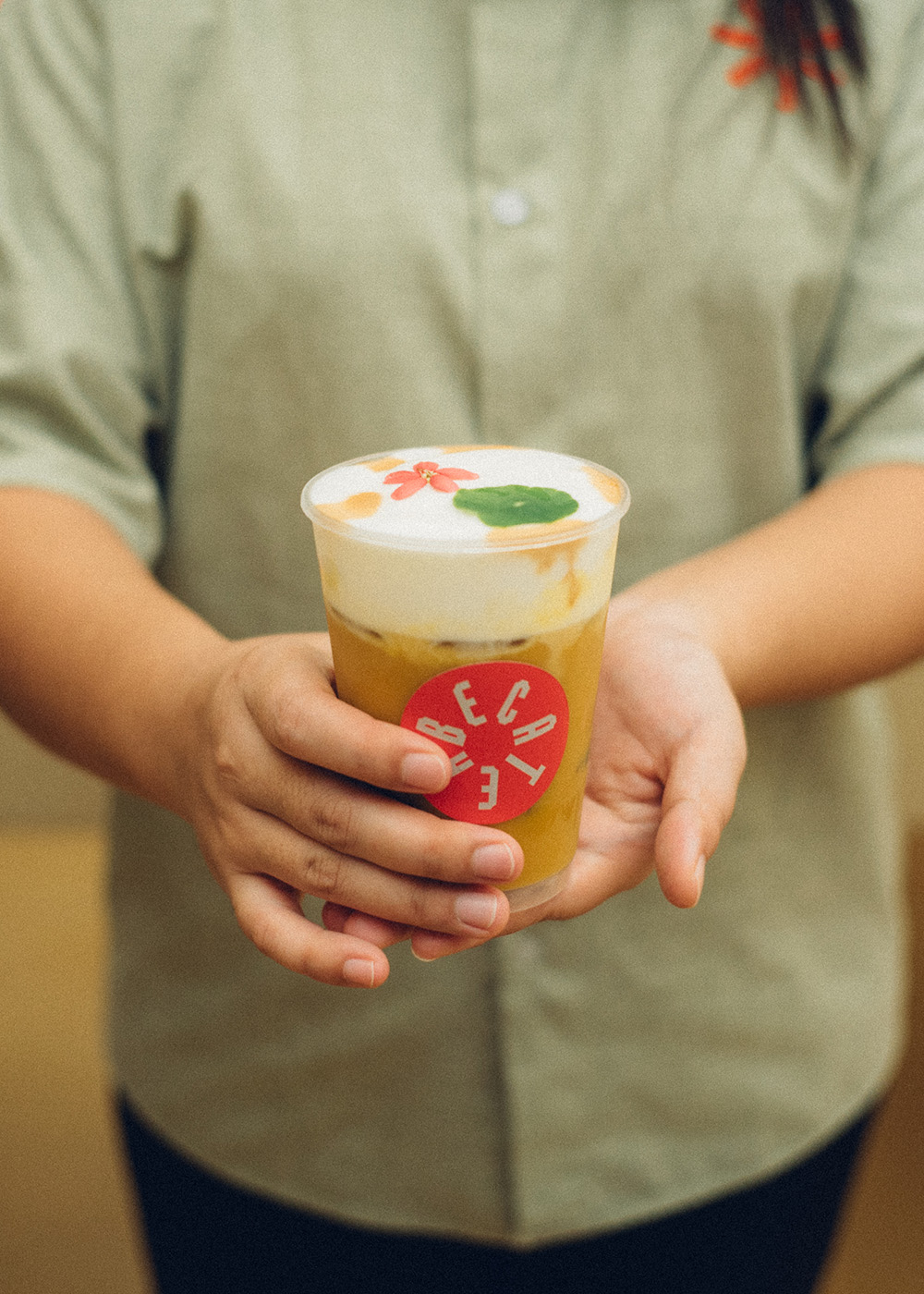One such story that has been shaped by tea is that of PC Koh and his wife Rin Rin Wong, who are two of the founders of the specialty tea house Beca Tea (pronounced beh-cha, as in the Malay word for rickshaw).
Situated in Damansara Uptown, Beca Tea is not your typical tea shop. As you approach it, the first thing you’ll notice is the bright red sign outside, inviting you in with the promise of “terrific teh tarik”. Step closer and the tea-brown glass door slides open to reveal a narrow store. The entirely brown walls and tea-dyed fabric hangings are contrasted by the bright stainless steel of the counter as well as a pop of red from the menu lying in wait for you to peruse its pages.
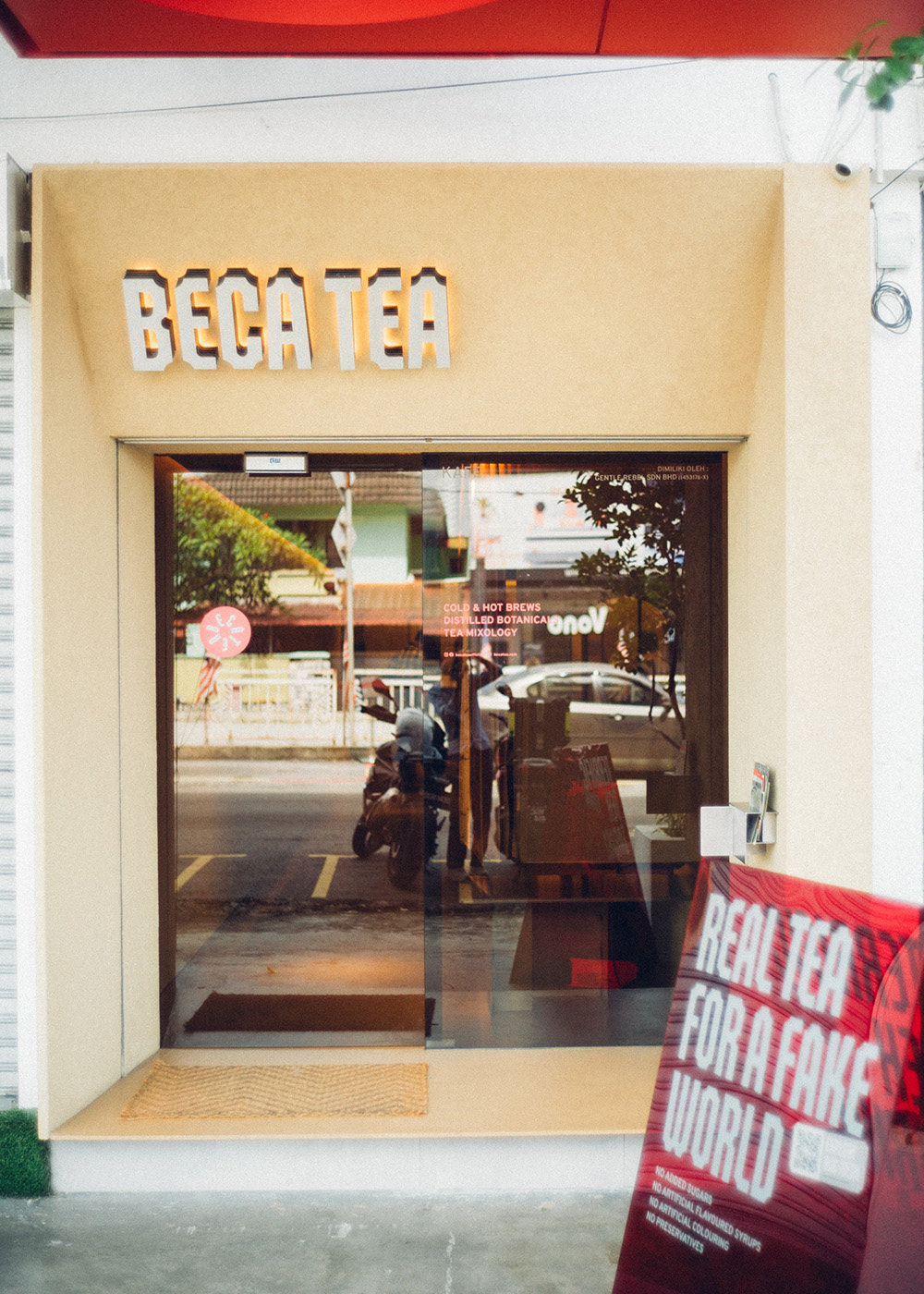
I meet Rin Rin first, who greets me as I study the many little flavour cards on display, each introducing one of 12 tea varieties that Beca Tea serves across their extensive menu. She asks me what I normally drink, and we settle on the Golden Monkey Black Tea – a special-reserve golden-tipped black tea from Fengqing, Yunnan. After selecting a few more drinks from the (it bears saying again) extensive menu, we settle down at the only table space in the store.
As we chat, I finally meet PC, who was previously busy in the back-of-house. PC Koh is the fourth generation in the family behind Koh Chuan Huat Tea Merchant Sdn. Bhd. who has been trading tea since 1931. The store still stands today on Jalan Tun HS Lee, and they roast and blend their teas in a compound on Jalan Semarak. Together with Rin Rin and their nephew Joshua Ong – the fifth generation in the family and the Head of Product Development – they started Beca Tea.
He tells me that he’ll be personally brewing my cup of tea before we start. Though they can’t serve everyone this way in their daily operations, it’s clear from that PC and Rin Rin care a lot about the customer experience. Once the tea is poured and the conversation is flowing as smoothly as my drink, we dive into the interview.
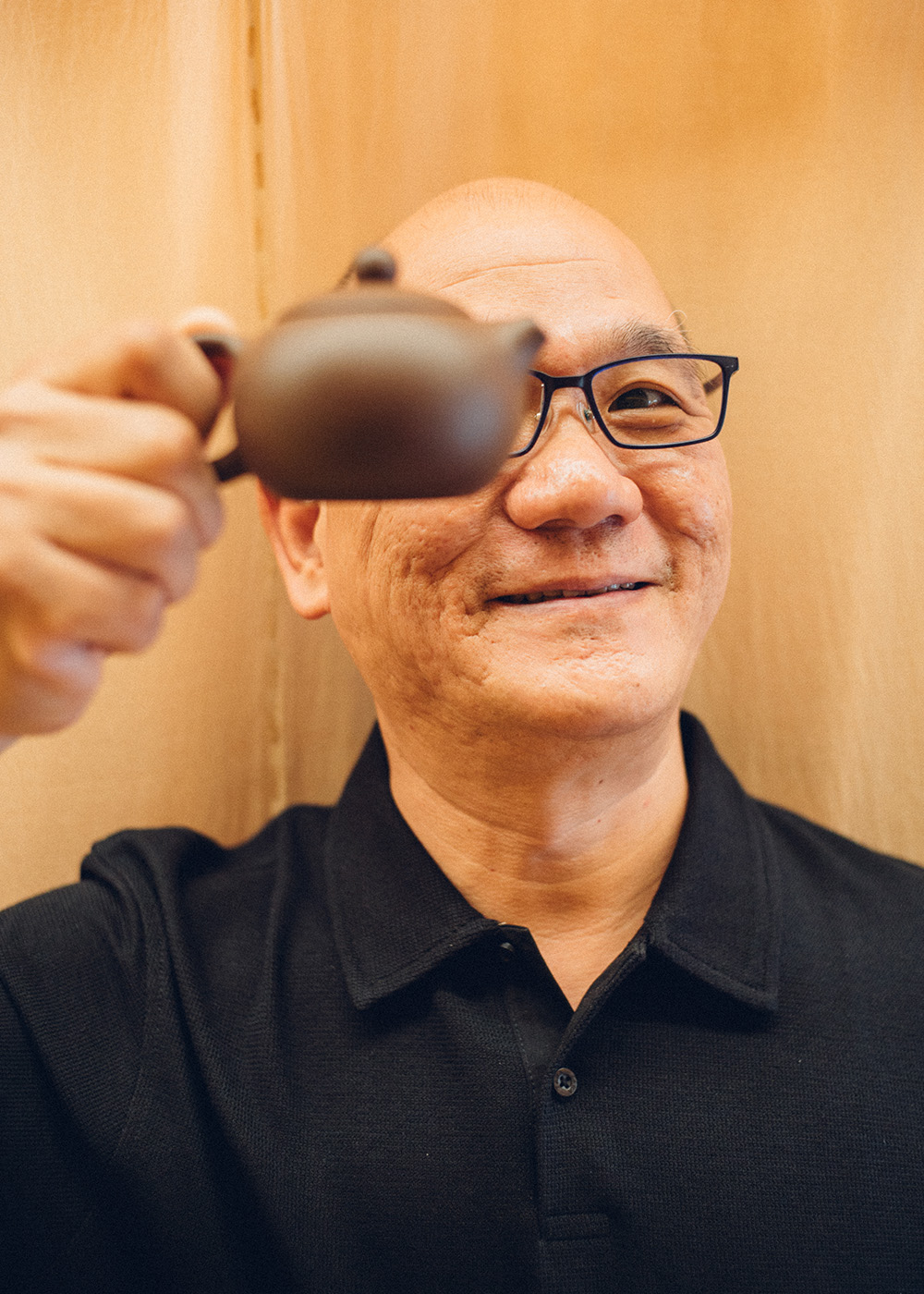
Let’s start easy. Give us a quick run-through of Beca Tea’s history.
Rin Rin Wong (RR): Well, the fourth and fifth generation were looking to see what they can do with the tea business. As we looked around, we felt that there was a gap [in the tea market]. You either have these China teashops or TWG on one end of the spectrum; and on the other, you have boba.
We really wanted people to know tea for what it is. In the F&B business, there are a couple of things that are non-negotiable: quality and service. But there’s a third thing that we have, and that is to bring people on a journey of discovering tea. It sounds clichéd, but we are quite serious about it.
We do the whole spectrum from teh tarik to tea mixology and then we get you closer and closer to the pure teas. From the humble teh tarik, which we have been producing our own blend for over 80 years, it transcends to our mixology drinks, which are an easy crossover for the boba crowd.
As the fourth generation of a tea family, what is tea to you?
PC Koh (PC): Tea is in my DNA, it’s in my blood. My whole household drank more tea than water. Our water pot is only on the table to either dilute the strong teas we have or to bring down the temperature of a fresh-brewed pot.
My father inducted me into tea when I was very young. Around five or six, I started drinking different teas and getting pop quizzes like ‘what do you taste?’. My only playthings were crafted out of wooden tea chests. We’d break apart the chests and make little balls out of the aluminium foil inside and we’d play with that. My masak-masak was using all the real teapots while all my friends had plastic ones.
RR: I am diametrically opposed to him. I never drank a drop of tea until I had to do this business. My mother-in-law’s jaw dropped when she heard. So, even after we got married, despite PC brewing and having tea every evening, nobody disturbed me. I grew up loving Milo, soy milk, and water and it was good enough – until I had to do this business.

What is your approach to product development here at Beca Tea?
PC: It starts with a fundamental and basic understanding of many different types of teas and flavours. You’d be surprised by what you can find. My wife is a good counterbalance because she can tell me what can or cannot work. But just the two of us are also not enough. That’s where my nephew, Joshua, and the other consultants we work with come in, it’s a collective team effort.
RR: We also have Tracia, who is our goddaughter and she’s very good [at mixology]. We also must give credit to our chef Justin, who is our central kitchen chef. It’s a team effort and like what PC said, it starts with the fundamentals. It’s first the science and then the creativity.
When we first started, we didn’t really know what people would like. So we just guessed, to be honest. Now a year later, we have data. So, we look at sales data, we look at what people like, and we give them that. They like light and refreshing drinks, botanical infusions, floral-fruity notes, so we find more [of those].
What about the things that people don’t know they want?
RR: Our menu is full of them! (laughs) From the pure teas to the Squash Supreme to an upcoming pina colada black milk tea. We’ll still have those [experimental options] available.
“Real tea for a fake world” – tell us more about this approach to tea.
RR: First of all, we don’t take ourselves too seriously! I think it just reflects who we are. We are a bit cheeky, a bit provocative. We just put it out there and we tell people to interpret it for themselves.
I’ve got customers who tell me “I’m so glad you exist”. So, for customers like them, it’s maybe a relief from all the sugar syrups out there. I remember this one guy who came in, sat down and just (leans back and sighs). So, for him, “real tea for a fake world” is probably something like having somewhere to get away from the harried pace of the world and just enjoy tea and quietness. Then for others, it is a very provocative statement that they are afraid of. They don’t like the word ‘fake’. It’s just for people to interpret as they wish.
What are some aspects of tea and tea-drinking culture that you think should not be changed, and what are others that must be redefined?
PC: I think one of the main things about tea culture is the gathering. The sitting down together, the friends, the family; that is so fundamental, and I think the communal aspect of it shouldn’t change.
RR: What should change is that shroud of secrecy that the so-called tea experts like to guard. We find it totally annoying, and we encounter it ourselves. We went to this place and they just spun a story and then charge you all that money – but they won’t even tell you what tea you’re buying!
With tea it’s hard to tell whether you’re overpaying or not because there’s not enough open-source knowledge, compared to coffee. I think they want to continue to be able to charge like that. You come in here and we’ll brew you a damn good tea for RM12.90, and you also get a flavour card, which you can take home with you.
In China now, because they have such a deep history of tea culture, they are trying to modernise tea. So apart from CHAGEE, they also have this company called Tea’stone, and people say they are like the next Starbucks. Those are the waves that we want to ride, because we are not big enough to change anything.
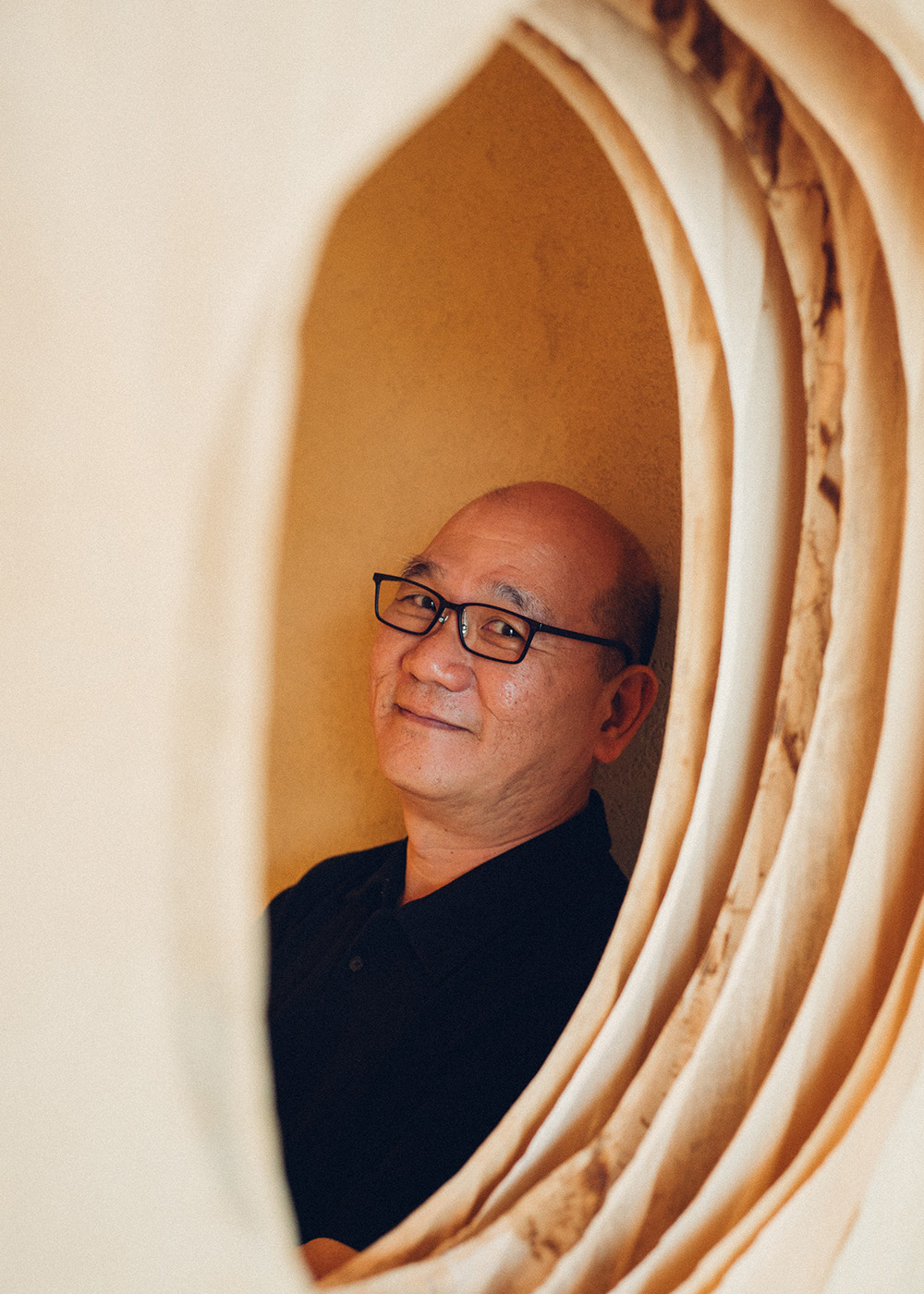
Locally, we’ve seen the quick growth of café culture, specialty coffee, and independent roasteries over the past few years. Aside from matcha, is the same increase in interest and consumption happening with tea as well?
RR: Well, if you consider CHAGEE tea, then yes lah. (laughs) I think it will grow. We believe so because coffee is saturated. Tea is age-old.
PC: It is old, yet new and interesting.
RR: As I said, having large chains like CHAGEE is good for us. We’re an SME in KL, and though we have brand ambitions, at this point we’re changing the world one step at a time and we just want to ride on whatever waves there are.
What are your favourite drinks on the Beca Tea menu, taste-wise and development-wise?
PC: That’s like asking me to choose my favourite child! (laughs) It’s very difficult for me to answer that because… I like all kinds of tea! Whatever is on my menu, I like them all, especially because of the amount of effort we’ve put in to craft everything. We always say that if you personally don’t like what you create, then don’t sell it.
RR: I’ll make your job easier. (laughs) My favourite drink is the Yuzu Sencha, pure teas aside. I said earlier our drinks are layered and complex, but the art of marrying two simple ingredients in the right proportion and making sure it works should not be taken for granted. It’s a very refreshing and light drink.
Discovering tea can be a long, complex process. Which drink from Beca Tea would you recommend as a must-try for beginners?
RR: It’s really about understanding what people want. If you are a coffee lover who is a beginner in tea, then we would say try the Lapsang Souchong Milk Tea. If you are a boba drinker and you are new to purer forms of tea, then try the Elderflower Fairy or the Bluepink. If you are a beginner to pure tea, then we know what we won’t recommend which are the white teas because they are too delicate, so probably something in the middle like the Duck Shit Danchong Oolong.
So, in summary, Beca Tea is a place for discovery. Whether you’re discovering something you like or something you don’t like, it’s discovery all the same.
PC: It’s learning more and knowing yourself too.
Read more inspiring stories here.
Photos by Imran Sulaiman.




